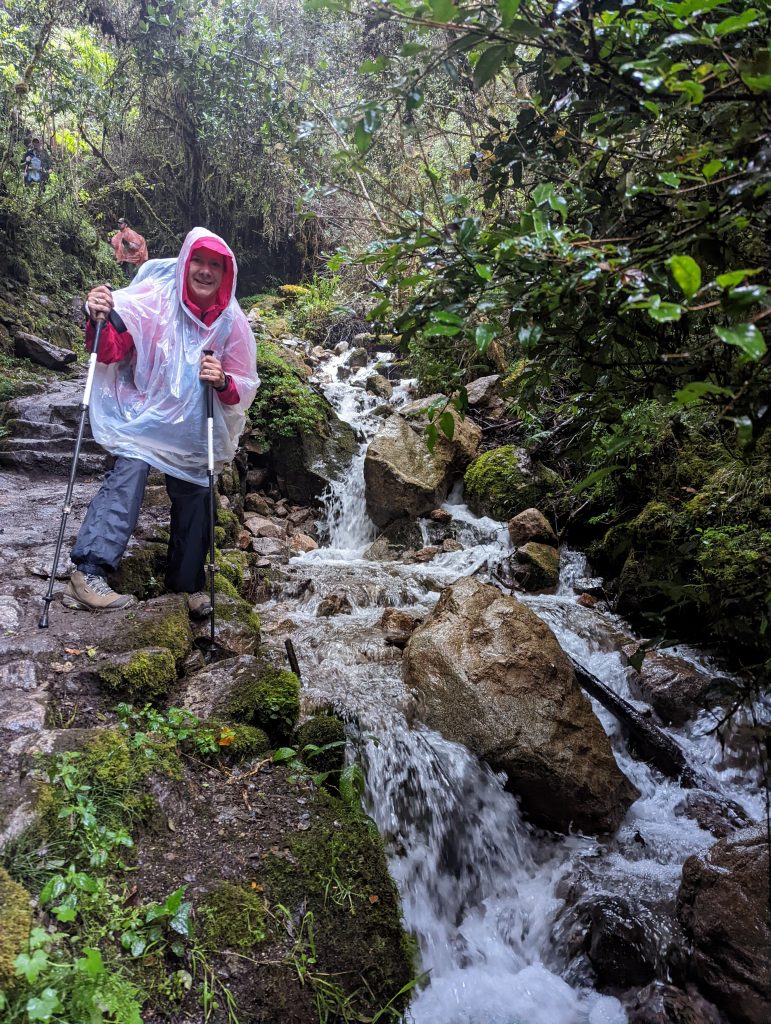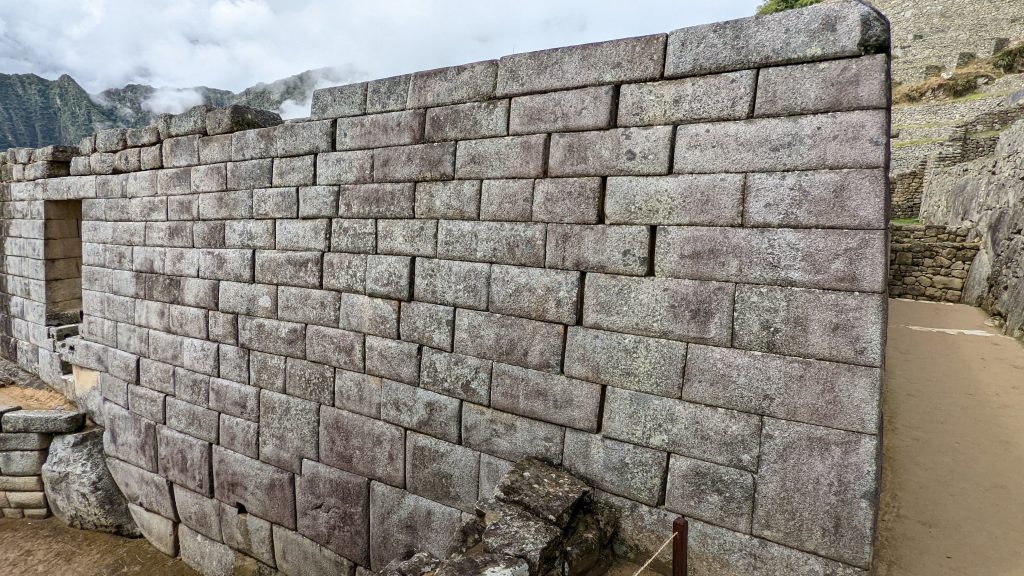Elevating Adventure
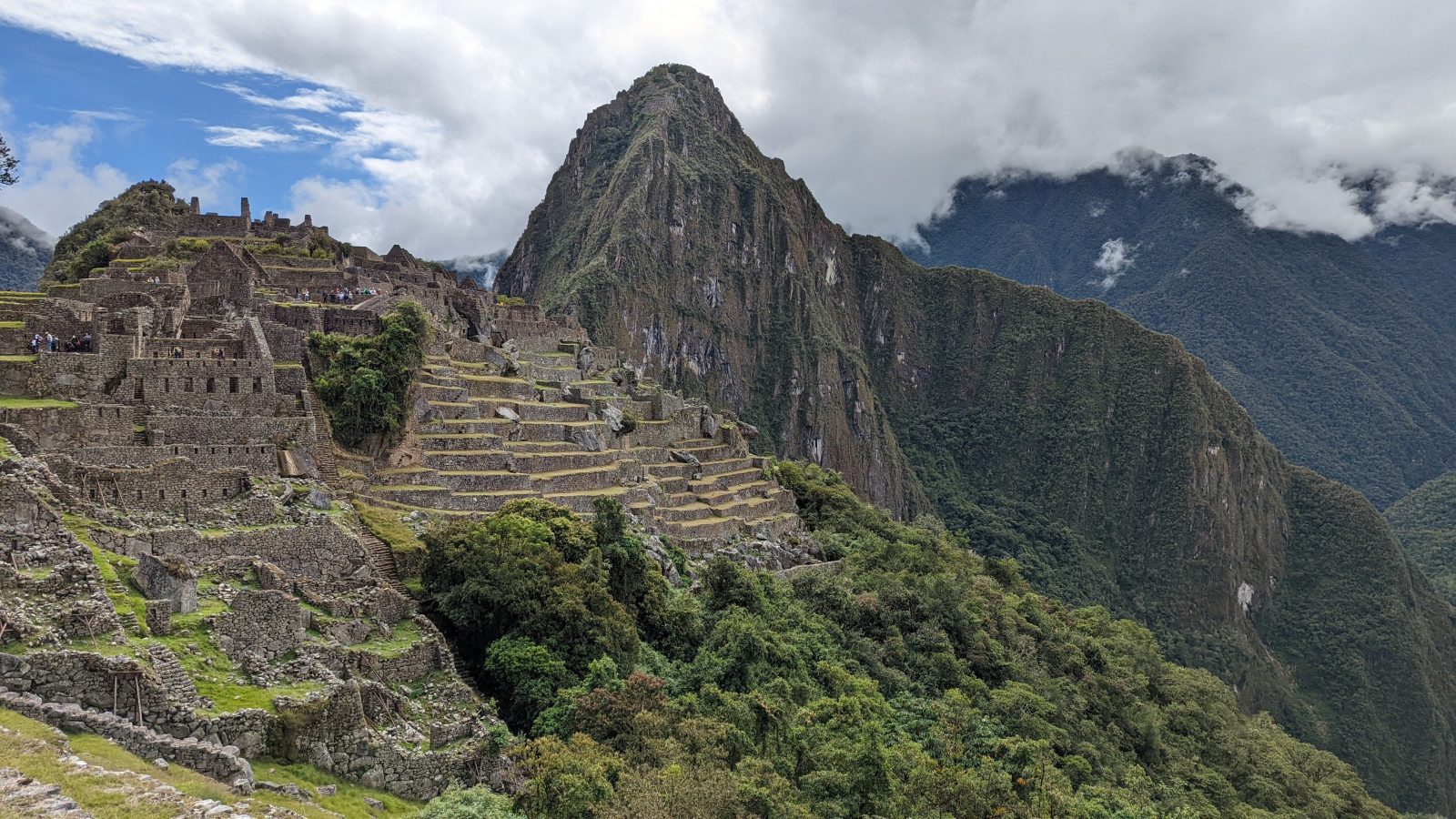
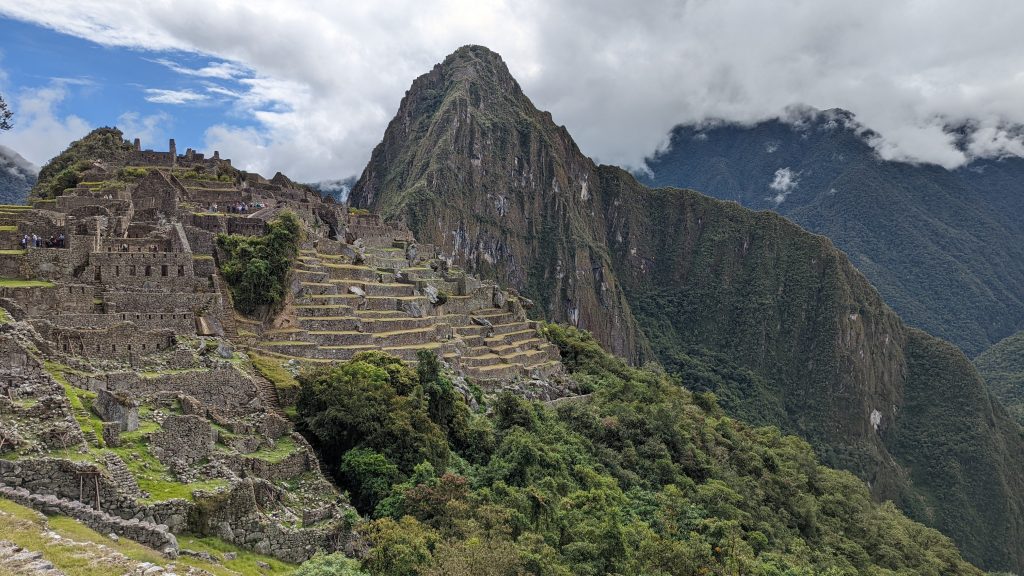
High in the Peruvian Andes lies Machu Picchu, one of the most remarkable historic sites in the Western Hemisphere. Attributed to the Incas, the complex of ruins is now a popular attraction for intrepid travelers, like Lea Frederick, who set out looking for adventure – as well as inspiration in her work as a watershape designer.
By Lea Frederick
From the designer’s eye, I believe travel is the most important asset we can give ourselves. It’s the greatest way to fuel, I’ve personally found, your creativity and passion for design. Travel gives us the opportunity see other cultures, and experience other forms of design from other eras and civilizations.
It connects us to both the past and future. Our society here in the U.S. is so comparatively young, it’s impossible to gain the perspective you find by seeing places that have existed centuries or even millennia before our society came to be.
That’s at the heart of why I wanted to travel to Peru and see in person the legendary Machu Picchu, the great citadel of Incas high in the Andes Mountains. I was part of a group of 15 family members, including many extremely experienced world travelers. We had planned the trip more than two years ago, but was put on hold because of the pandemic.
Finally, this past summer we made the journey, and quickly found that it was more than we had hoped for. In some ways, it was a challenging and even grueling journey, but we did our research were well prepared, which enabled us to enjoy and make the most of the entire experience. We named our adventurous group “Inca-Hoots” and approached the rigors with good humor and open minds. That spirit was rewarded with a treasure trove of memories, and lessons from the past.
I find the more I travel, the more excited I get at the way other societies, past and constructed their world, and especially the fascinating way in which they used water. Here’s a sampling of what we found.
ANCIENT ECHOES
The Inca were Andean people with incredibly developed engineering skills, dating roughly from 600-1000CE. Their history is controversial because there is no known written language or documentation from that timeframe. Most everything known about Inca civilization comes from oral traditions and archeological study.
Reaching and exploring Machu Picchu was our primary objective. The mountain-top complex is at the heart of an entire region of Incan civilization and ancient treasures. It is one of the most photographed historic sites in the world and was believed to be a royal palace as well as a sacred religious site.
It stretches over five square miles with multiple levels and more than 3,000 steps linking the different areas. Despite its considerable size, archaeologists believe only 500 to 750 people lived there at any one time, although some estimates reach as high as 2,000.
The site was abandoned in the 16th Century and not rediscovered until 1911 by archaeologist and explorer Hiram Bingham who found it after following tips from the small number of locals who knew about its presence high in the mountains. No one knows exactly why the Inca left although historians believe the Spanish conquests of the region during that time were to blame.
There is no question, however, that the Inca achieved exceptional feats in hydraulic design and construction using gravity flow and remarkably effective distribution networks built of carved stone, parts of which are still in use today. From a watershaping standpoint, I was delighted by the many and creative ways the Inca worked with water as a resource, and as an object of worship.
Inca understood and viewed water as a sacred life force. In fact, the most important function of mummified ancestors in Incan culture was to intervene in the spirit world to maintain the constant flow and abundance of water. (Mummies were dry and thought to attract water and if they were not kept comfortable, they would retaliate by ceasing to intercede in the supernatural realm to provide water.)
Snow-covered mountain peaks with glacier melt and natural springs were sources of water. The region features systems of aqueducts, cisterns, culverts, swales and runnels, many of which are still being used centuries after they were built. It’s even fair to say that the network of waterworks is still developing. A massive waterfall formed just three years ago due to unprecedented snow melt on the area’s highest the peaks and being used to supply local populations.
ON THE WAY
As mentioned above, Machu Picchu is at the heart of entire region of Incan settlements and ruins and as a result, there’s quite a lot to see along the way. For example, on the trek to the Machu Picchu, we stayed in in the former royal estate of Ollantaytambo.
Now a bustling village, Ollantaytambo was a strategic military, religious and agricultural center that still dazzles with its stonework platforms and its imposing buildings that are four meters high. It was here the Manco Inca successfully repelled the Spanish troops of Hernando Pizarro in 1536. It is the only town built entirely by the Incas that is still in use.
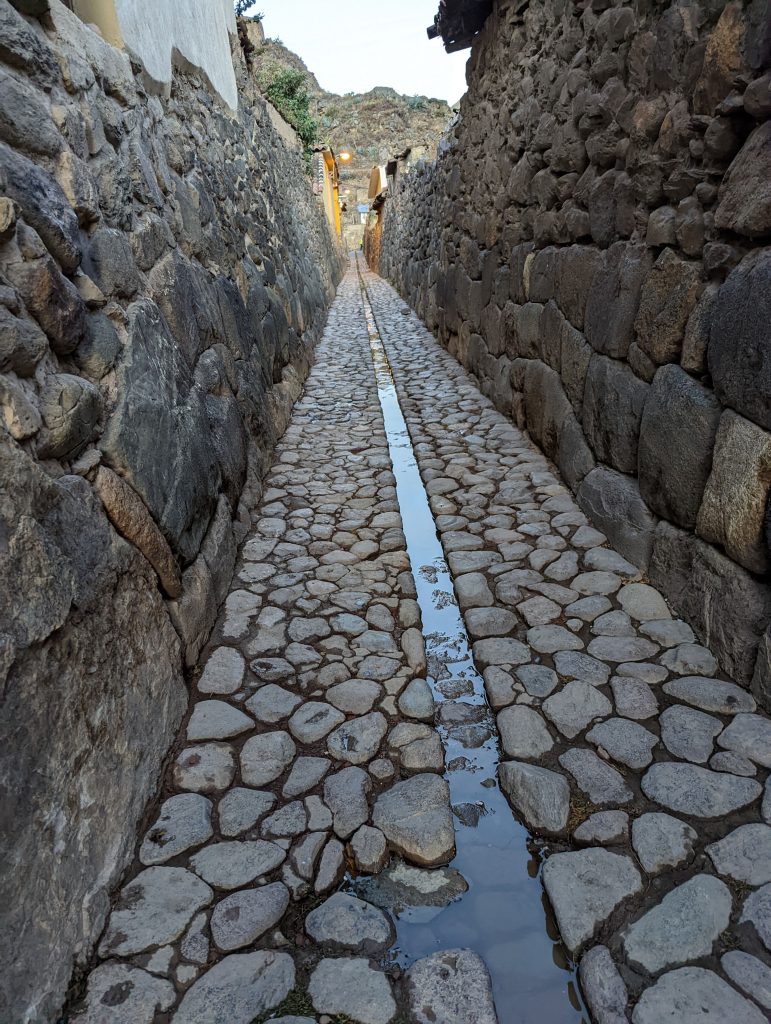
This archaeological zone preserves its houses, streets and canals from the Tahuantinsuyo era. The fortress was built with huge rocks brought from a quarry six kilometers away, near the Urubamba River.
To transport the stones, the Incas had to divert the entire water channel around them, meaning a masterful engineering work on a large logistical scale.
The construction of Ollantaytambo, like the sanctuary of Machu Picchu itself, dates back to the period of greatest expansion of the Inca Empire, which coincides with the government of the Inca Pachacútec. After the arrival of the Spanish, the fortress served as a refuge for Manco Inca, who led the resistance against the European invaders.
The Ollantaytambo temple is an impressive architectural ensemble. It is located at 2,792 meters altitude and is 3,500 years old. The Ollantaytambo designed an aqueduct system, which is still fully operational today. Each fountain was carved out of rock with its own characteristics and designs. The best known — and considered the most beautiful — is the Nusta Fountain, a feature made of a single stone and decorated in the form of a portal.
One of the most surprising details of Ollantaytambo is that the rocks found in the complex are perfectly polished and feature impeccable cuts. They are intact, which, among other things, means the builders were able to lift the stones and transport them without suffering any damage.
That was quite a feat given the fortress is built on an extremely steep slope. Without a doubt, Ollantaytambo is one of the great wonders of Inca architecture that, until this day, generates lingering questions that may forever go unanswered.
WATER WORKS IN STONE
The examples of large-scale watershaping are evident throughout the region. Another example, the Salineras de Maras, are a set of around 2,000 salt wells formed naturally hundreds of years ago. The Incas worked these salt pools to satisfy the demand for food. A natural spring fills the wells with water and salt which, when evaporating, leaves the salt ready to be removed.
The Salineras de Maras produce a famous pink salt, a very strange product that is formed in only a few places in the world. The locals still harvest the salt, which is one of the area’s most notable exports.
Not far from there, the Inca Platforms of Moray (elevation 11,482 ft) is a set of concentric and circular platforms that the Incas built as a kind of agricultural laboratory in which they could experience the sowing of different products to different microclimates. Each step of Moray is on a different ecological floor, and therefore, in a different weather condition. Each level also had an intricate irrigation system to feed all levels designed by runnels. In total there are three concentric circles where up to 20 different types of microclimates have been detected.
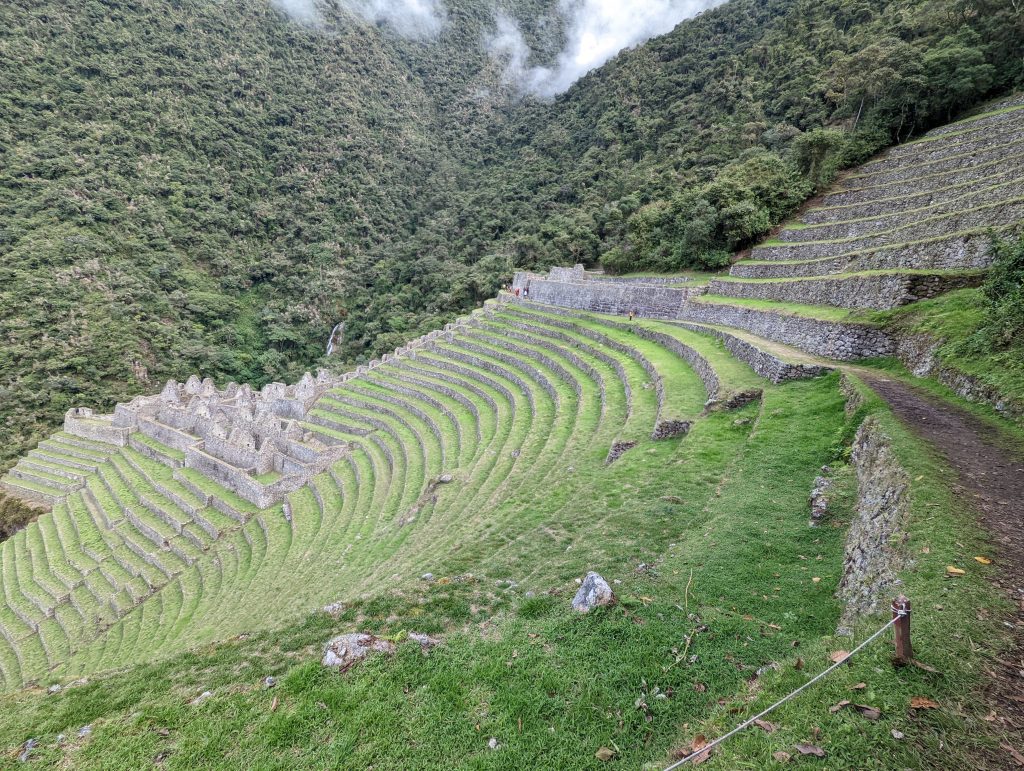
The deepest circles register higher temperatures that decrease as the platforms are externalized. It is believed that the Incas grew potatoes, corn, sweet potatoes, goose(Note: This is the only animal. Did she mean cous cous?), quinoa and even coca leaves there. Today, it is one of the tourist attractions most visited by tourists who want to take a picture with the set of these platforms in the background. Currently, to better preserve the place, no one is allowed to enter the circles. Moray is one of the highest points of the Sacred Valley of the Incas.
Also, along the way we visited Winay Huayna site, the largest major complex on the trail before Machu Picchu. It has an upper & lower group of structures and its religious character is indicated by having 19 fountains (more than any other Inca site) separating them. With its proximity to a large waterfall and Inca road, it is believed to be built as a ritual stopping place along the pilgrimage road to Machu Picchu – with the sacred water as an important aspect of the site’s function. The fine terraces denote food growing (likely coca growing).
ARTISAN PAST
As we entered Machu Pichu itself, we passed a large worship boulder at the Funery Rock where we placed coca leaves and gave our thanks to Pachamama (“mother earth”.) The Watchman’s Hut sits high above the city at the terraces, a place where the most iconic images of Machu Pichu are taken.
The Sun Gate or Intipunku is made of steps that some believe that these were some kind of a control gate for the people who enter and go out of the Sanctuary. It is one of the most important archeological constructions that connects with Machu Picchu and is dedicated also to the cult of the INTI, the Sun god. (On determined times of the year, the sun shines through the structure.)
With over 150 buildings — ranging from baths and houses to temples and sanctuaries, stone monuments and mysterious splendor — Machu Picchu stands as one of the world’s most famous manmade wonders. Amazingly, the Inca people did not have the invention of the ‘wheel’ meaning all their amazing stonework was brought in by hand or by animal.
Historians believe Machu Picchu was built at the height of the Inca Empire, which dominated western South America in the 15th and 16th centuries. It was abandoned only an estimated 100 years after its construction, as mentioned above, probably around the time the Spanish began their conquest of the mighty pre-Columbian civilization in the 1530s.
There is no evidence that the conquistadors ever attacked or even reached Machu Picchu because their typical overtaking of a village would result in mass destruction – whereas Machu Picchu’s buildings were found in pristine condition.
The site’s finely crafted stonework, terraced fields, and sophisticated irrigation system bear witness to the Inca civilization’s architectural, agricultural and engineering prowess. Its central buildings are prime examples of a masonry technique mastered by the Incas in which stones were cut to fit together without mortar. In several spots throughout the complex, the Inca used existing outcroppings as part of the structures, creating a seamless blend of architecture and nature.
Archaeologists have identified several distinct sectors that together comprise the city, including a farming zone, a residential neighborhood, a royal district and a sacred area. Machu Picchu’s most distinct and famous structures include the Temple of the Sun and the Intihuatana stone, a sculpted granite rock that is believed to have functioned as a solar clock or calendar.
A UNESCO World Heritage Site since 1983, and designated one of the New Seven Wonders of the World in 2007, Machu Picchu is Peru’s most visited attraction and South America’s most famous ruins. As a result, the Peruvian government has taken steps to protect the ruins and prevent erosion of the mountainside in recent years.
As we left Machu Pichu, the sense of wonder was even greater than when we had arrived. Despite our extensive exploration, there were sites we weren’t able to visit, including a famous “water temple” near Ollantaytambo.
At this writing, we are in the early stages of planning a trip through Watershape University. My thought is that for anyone who loves history and the wonderment of ancient architecture, Machu Picchu and the surrounding area are on par with the ruins of Rome, Greece and Turkey. It is a place of singular beauty in its use of stonework and watershaping; a place where once you visit, you’ll never forget.
(Note: there are much easier ways to experience the wonder of Machu Picchu without a 4 day/3 night hike on the Inca Trail. There are trains & buses that take you right to the entrance of the sanctuary but a permit is still required to enter, and needs to be acquired long in advance of visiting).
FROM THE HEAVENS
Along with master engineers, the Incas were also accomplished astronomers.
The stars in the sky were very important to the religion of the Inca. They identified constellations and individual stars and assigned them a purpose. According to the Inca, many of the stars were there to protect animals. Every animal had a corresponding star or constellation which would look out for it.
Today, traditional Quechua communities still see the same constellations in the sky as they did centuries ago. The sun and moon are considered gods and temples and pillars were laid out specifically so that heavenly bodies such as the sun would pass over pillars or through windows on certain days, such as the Summer Solstice.
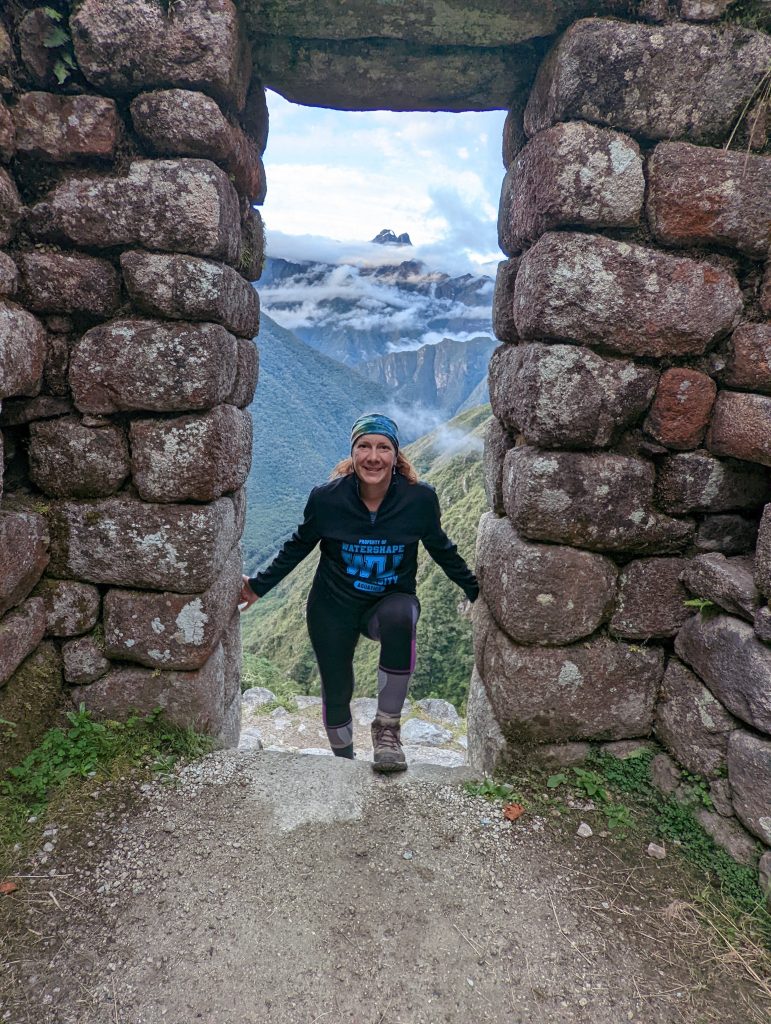
The Inca believed their god, Viracocha, had planned for the protection of all living things, and that each star corresponded to a particular sort of animal or bird. The star grouping known as the Pleides held particular influence over the lives of animals and birds. This group of stars was not considered a greater god but rather a lesser huaca, but Inca shamans would regularly make sacrifices to it.
There were two sorts of constellations for the Inca. The first are of the common variety, where groupings of stars are linked in connect-the-dots fashion to make images of gods, animals, heroes, etc. The Inca saw some such constellations in the sky but considered them inanimate.
The other constellations were seen in the absence of stars: these dark blotches on the Milky Way were seen as animals and were considered living or animate. They lived in the Milky Way, which was considered a river. The Inca were one of the very few cultures who found their constellations in the absence of stars.
I have been lucky enough to see the night sky in rural areas of the southern hemisphere two times and both have left me awestruck – maybe it’s because I’ve always lived in a city and stars were not bountiful or super visible; but, seeing the sky in the southern hemisphere is just one more of the many reasons I look forward to returning.
Lea Frederick, IWI, is owner and design specialist for Vue Custom Pools & Design, a watershaping firm located in Greensboro, NC.











